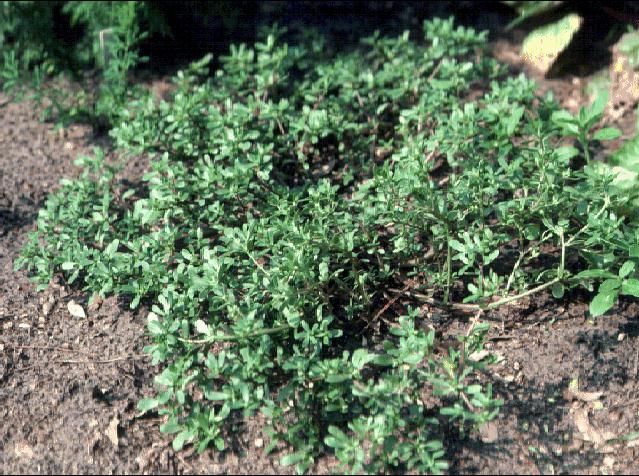Purslane—Portulaca oleracea L.1
Purslane is another of the weed plants commonly found in Florida that are eaten occasionally as a vegetable, although it is not grown in gardens or collected as frequently as pokeweed and amaranthus pigweed. Purslane derives from the Latin portulacca and the old French pourcelaine. It sometimes is confused with a different common weed called Florida pusley (Richardia scabra). In fact, purslane is often called pusley and pussly, in addition to kitchen purslane, garden purslane, and fatweed.

Credit: James M. Stephens, UF/IFAS
Description
Indeed, fatweed may be the best name for this vegetable weed since its leaves and stems are very fleshy and succulent. Common purslane is a summer annual with smooth purplish red prostrate stems arising from a single taproot. The small oval juicy leaves are clustered at the ends of the branches. Small yellow leaves are formed in the leaf axils. Cultivated forms are more upright and vigorous than those growing in the wild.
Purslane is a native of Persia (Iran) where it was used over 2,000 years ago. It was introduced into the United States from southern Europe. Now it is most abundant in the eastern states, including Florida, and least common in the Pacific Northwest.
Culture
Purslane reproduces from seeds and stem fragments. The tiny seeds are nearly oval, wrinkled, and black with a whitish scar at one end. When planted in the spring, the plant flowers and fruits about May or June. It is a tender plant susceptible to frost injury. Whereas wild forms are plentiful throughout Florida, seeds of cultivated varieties of purslane are seldom listed in vegetable seed catalogs. French seed houses are reported to list purslane varieties.
Use
Whole young plants, and especially young leaves and tender stem tips, can be used as a potherb or eaten raw in salads. The taste is similar to watercress or spinach. Protein content is 2% to 2.5%. Seeds also have been eaten either raw or ground and made into bread.


